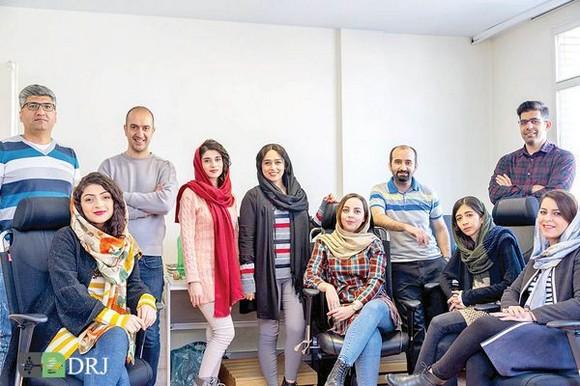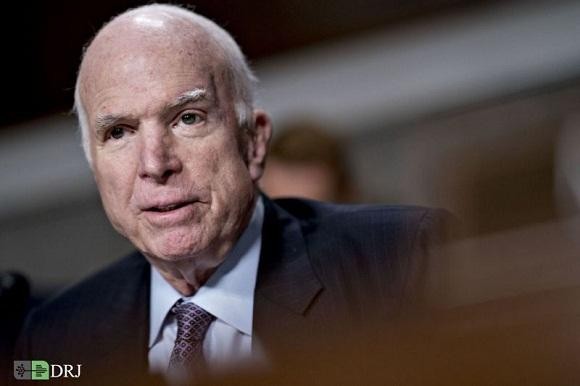With private equity fighting rising deal valuations, and with record dry powder chasing too few attractive deals, Chris Leahy, co-founder of Blackpeak (Holdings), is of the view that vintages of PE funds maturing in the next five years are set to be much more challenging than the previous 5-7 years, during which a lot of more financial engineering was possible.
Leahy said valuations will continue to rise, and pointed out that the fallout may not necessarily be a market crash or correction, but a closure of some of the smaller PE firms.
With the bigger firms raising larger vehicles, the Blackpeak co-founder pointed out that the industry had already witnessed some kind of bifurcation, and predicted tough times for stand-alone sector agnostic mid-market funds. “….many of them won’t be able to scale and raise new funds, and will have to close. There’s strong demand at the top of the market for allocations with some of the biggest funds,” he said, during an interaction.
“If you are just providing growth capital, and are a small regional sector agnostic PE player, it is difficult to differentiate, and a lot of different type of funds are out to eat your lunch……. You need a very clear and compelling strategy and mission and objectives to attract LPs – you just can’t run on the mid-cap or growth-cap sector agnostic Asia play to attract sufficient LPs that can get you to a place where you can sustain yourself…….,” he added.
According to Leahy, for private equity looking for Asia exposure, it would be impossible to ignore the two behemoths – China and India.
For the rest of the region, he said that Indonesia remained attractive, but it is difficult to do deals there as its government was flip-flopping on policy, while Malaysia was completely up in the air at the moment with the change in the regime, even as Vietnam was seemed to be fairly attractive, and lots of money was pouring in to that country, as investors equated it to being a mini-China.
“By and large, looking at developing Asia, it is extremely positive – it is not about finding the deals and understanding the risk with those transactions,” he added.
In terms of sectors, Leahy said that PE could not go wrong with consumer space in India and Southeast Asia, on account of the demographics the region presented.
“Anything in consumer – FMCG, retail, healthcare, education, pharmaceuticals especially on the distribution side. Logistics can absorb a lot of capital – warehousing, delivery, e-commerce. Of course, there is always an obsession in Asia about real estate and financials. Anything consumer related because of the demographics can absorb capital– that is the case especially in Indonesia, Philippines and Vietnam, while China is still more manufacturing and technology,” he said.
Edited Excerpts:-
Sitting here in Singapore, if an investor were to ask you where to put their monies – would you recommend Southeast Asia, China or India?
It’s impossible to ignore China. The issue is what to invest in, and how to address the China market. We have clients that avoid anything to do with the government in China and only invest in private companies and controlled deals. Others are prepared to take a bigger picture view and will invest in growth capital and pre-IPO investments. But if you are looking at an Asia exposure, it is impossible to ignore the two behemoths – China and India. Then you start to look at other interesting countries – Indonesia is still attractive, but it is difficult to do deals as its government is a bit flip-flopping. Malaysia is completely up in the air at the moment with the change in the regime, Vietnam is fairly attractive and lots of money is pouring in, as it is seen as a mini-China. By and large, looking at developing Asia, it is extremely positive – it is not about finding the deals and understanding the risk with those transactions.
So when it comes to finding the deals, with so many funds chasing the same deals, is it not pushing valuations to all-time highs – will we see corresponding returns?
As long as capital markets stay open, strong as they are, I don’t see an end to increasing valuations. People are looking for yield – markets are open and companies can fund themselves, they can borrow money, they can refinance, and they can go to market, and exits are more achievable – so they use exits to drive up M&A prices, and even the private market is a good source for deals. As long as that happens, I don’t see much of that slowdown, and valuations will continue to rise. Is it going to end in tears? It might eventually – I would imagine the vintages of PE funds maturing in the next five years will be much more challenging than the previous 5-7 years, where a lot of more financial engineering was possible. While some of the valuations you see are heroic, we are yet to see too many of them fall over, but if you have 2-3 very high profile LBOs turn sour, the sentiments can change very quickly. But we may see this more likely to play out in US or Europe than Asia, because you have a different growth trajectory here, and the organic growth that you see in Asian companies can probably help support higher levels of leverage. Ultimately there will come to a point where there are not enough deals to go around, and valuations will get to a point where they are unsustainable. Will that lead to a crash? Not necessarily, but it will lead to the closure of some of the PE firms, which is happening already. You should see that – there is some kind of bifurcation in the industry – the bigger PE firms are just getting bigger and bigger, and you’ve got a lot of niche firms – but middle market funds are struggling to get to scale.
Yes, the bigger PE firms are getting bigger, and at the same time, we are seeing a lot pension and sovereign money also chasing deals. Also, many of global PE firms today have Asia-specific, or China-specific and even India-centric funds. How does that change the PE landscape?
Yes, the Canadian pension funds, and others like Temasek are big investors now. For the PE landscape, the big LPs have learnt from the GPs, and they are beginning to write their own terms, and one of the first things they seek is co-investments. While this has been around for a long time, it is increasingly the case with the more sophisticated LPs – they are almost competing with GPs, they are also having a say in the deals the GP does.
SEA and India have several sector-agnostic PE firms? What is their future?
Not very rosy – many of them won’t be able to scale and raise new funds, and will have to close. There’s strong demand at the top of the market for allocations with some of the biggest funds. When people launch new funds, generally speaking, unless they are a major name, it takes a long time, it’s difficult, and the founding team may be required to put in matching fund requirements and negotiate very hard. Historically, we’ve had fund-of-funds structure, but that market is less active now than it was a few years ago. So, some of them have to rely on family offices and below – that’s not an easy market to tap. Ultimately, the ones that are successful are the ones that have produced outsized returns – they have produced Alpha and they outperform their peer group, and gradually they built up their track record – because all of these stories of the big PE firms started out as small firms many years ago – maybe it was easier then, and it is a more difficult environment now – while it is not impossible to do it even today, it will take a really long time, and one has to be very disciplined to grow the PE business. If you are just providing growth capital, and are a small regional sector agnostic PE player, it is difficult to differentiate, and a lot of different type of funds are out to eat your lunch. I see a lot of funds in the credit space, or the structured credit space chasing PE deals – they’ve come into the market only in the last 10 years, and some of these funds do deals very quickly, and they are added competition. You need a very clear and compelling strategy and mission and objectives to attract LPs – you just can’t run on the mid-cap or growth-cap sector agnostic Asia play to attract sufficient LPs that can get you to a place where you can sustain yourself – once you hit that level, then it is about execution and performance.
Over the last couple of years, the number of Asian LPs in private equity and venture capital firms here have gone up. We are also seeing the top families and family offices here being LPs in many of the local funds. While we can’t generalize, when compared to Western LPs, in your experience, how different are the Asian LPs – are they more risk-averse, are their expectations from PE different, are they looking for quicker exits?
I think they (local LPs) are much closer to the ground, and so they are comfortable with the risk in Asia. Lots of them are savvy investors, particularly the better family offices. We’ve worked with quite a few of them. Their strategy is to invest in something they understand when they see it benefits one of their core business. That in itself is decent strategy, something where they can they add value, where the investee firms can ride on the track record (of these LPs), use their connections, and they (Asian LPs) also understand the market, and they are also close to the market – they can also self-source quite easily, through their ecosystem of networks and business relationships. They are not like some firm in London trying to understand Asia-Pacific – these people have made their money here, and by definition, they are already successful people.
Many of the big deals in Southeast Asia, esp in tech and e-commerce, are led by Chinese internet giants – from Alibaba, to Tencent, JD.com – these companies are bigger investors in the new age businesses and in tech startup space in SEA when compared to private equity. The Chinese internet giants are also moving much faster than Western tech giants like Google, Apple, Facebook, among others in the region. As the Chinese internet companies become more active in SEA and India, how do you see this play out?
If you look at the large Chinese internet companies, as well as some of the large US tech companies, they are all in completely different time horizons – they don’t have limited partners. Their core businesses are generating so much cash that there’s an almost unlimited amount of money they are able to throw in some of these ventures. They’re able to take significant leaps very quickly on ideas they like. That’s going to make your traditional VC investment much more difficult in Asia – they have to compete with the likes of Alibaba, Baidu and Tencent for deals here. Some like Alibaba and Tencent have their own funds which also competes with VCs.
How do people here react to the Chinese internet giants? I think generally people in Southeast Asia are a little alarmed about just how much money is pouring into this region from mainland China – they are also making a clear distinction between investments from mainland China and indigenous Chinese diaspora in Southeast Asia. A lot of this is happening at the state level. For the VCs, they are also competing with Chinese internet giants who are pouring an enormous amount of capital into opportunities they see here. Chinese investments may squeeze out VCs here from deals – it will make the traditional VC/PE business more challenging.
But Chinese internet giants can provide the best exit opportunities for traditional VCs in Asia to exit. Have these companies got a comprehensive head start in making investments in Asia (India and SEA), when compared to Silicon Valley companies?
That can be the case, but many of these Chinese internet companies are also making early-stage investments in companies in India and SEA. They are in the Series A and B rounds. They are not coming in as Series E, F or G rounds, or just to offer exits. Silicon Valley is the granddaddy of the VC world, but in Asia-Pacific, while it is catching up, historically, it has not been a tech-oriented market. The Government in Singapore has tried to start tech businesses here, and have had some success – but not much so..India has always had a strong technology background. …With some of these Chinese internet firms like Tencent, Alibaba, are investing locally, we must also remember that for Asia, they are not that many VC firms like the Valley– so we need these Chines firms and their investments.
Yes, Chinese internet companies have been faster at investing in SEA and India, when compared to the Silicon Valley companies. For the Silicon Valley companies, despite many of them being global firms, North American is still their biggest market – it is their core market, and they don’t understand the Asian markets. Investors from China, Korea, India – they are savvier to invest in Asian markets when compared to a Google or Facebook. It is not to say that American tech giants won’t buy companies in Asia, but Asian conglomerates and corporates are closer to the investment, and many of them have a great track record in making investments in local startups and tech-based businesses.
I don’t think that these Chinese companies have stolen a comprehensive march over the Silicon Valley companies in investing in Asia. If you look at some of the top tech startups here today like GoJek, Grab, Lazada, they did not even exist a couple of years ago – so there is a lot of innovation that can come out from this region and that presents a lot of opportunities going forward. While the Chinese investors will be a force to reckon with, they are investing, by-and-large, according to a specific strategy – payments, logistics, delivery – and that makes sense too.
What about Vietnam – IPOs are blooming and a lot more listings are lined up. We are not seeing any signs of caution in the current IPO frenzy – valuations are at an all-time high. though. It is Southeast Asia’s busiest market for stock offerings over the past year – will investors get burned?
I am a bit concerned about the state banks – but, that is similar to the problems we have in China. When we talk to the guys in Vietnam that are running funds, they seem to able to find good quality private deals that are at sufficiently attractive valuations. So, I don’t think it is too out of hand yet. On the listings side, the valuations are high and could overshoot – but we still have some mileage yet.
What about Indonesia – it has been talked about as an emerging economy for PE to invest in for the last 5 years – why has it not changed or delivered?
Indonesia is a vast country full of natural resources – mining and gas and oil. But it ‘s also got the demographics. So it presents a lot of opportunity in infrastructure as well, because the market can accommodate it – but again, people like consumer there, they like consumer finance, technology and logistics, and healthcare becoming popular there… I think the biggest problem there is governmental directions. Generally speaking, I am positive about the Widodo administration. There is an election coming up, but I am not sure if he has remained popular with investors. But overall, he remains popular. There seems to be a trait in the Indonesia government over the last few years to flip-flop on policy and mining and smelting are perfect examples – they are constantly changing what you and cannot do and threatening to acquire investors’ assets. When you are making a long-term investment in a mining project, or palm oil project, and also have to deal with the major infrastructure to support that, anything that enables or might change your assumptions on investment returns around those projects, related to what government does – that can completely change the investment profile overnight. It is very difficult to legislate for that, to understand what is coming, and it is also difficult to get your money out, and I think that is what Indonesia suffers from the most – it is political interference around regulations that govern certain industries. We don’t see so much of this in the consumer space – it is more around mining, natural resources and agricultural as well.
Myanmar was talked about for a couple of years as a very hot spot. Why didn’t it take off for PE?
Because, first of all, the military there is still in power and heavily influencing things. Secondly, it’s a country that is trying to move from a frontier market to an emerging market very quickly without much of the infrastructure to do that – they’ve just incorporated the new company law. We’ve also have got new administration that is paralyzed to make any decisions because Aung San Suu Kyi is micromanaging everything and nobody believes that is going to change anytime soon. We got a confluence of problems. On top of that, we’ve also got the issue of Rohingya refugees. It is still a small economy. It is like Vietnam in 90s. But that said, people are still doing deals in that country. You can’t suddenly open up the country like that, and put in hundreds of millions of dollars without having problems. You will then have a massive inflation problem, and how do you manage the currency issues, corruption – the time to complete deals there is too long. Most deals are private stuff or some are related to government-linked infrastructure.
One place PE has not made much of an impact in Asia is distressed assets. Do you see massive opportunities in this space in Asia? There are a lot of distressed assets in India and China.
Yes, eventually! There’s too much easy floating around now. Most of the domestic economies here are washed in liquidity, and so banks are trying to lend money – junk bonds are back, and they are high yield. Interest rates are going in the other direction now, but for the last five years or so, there’s just been one-way traffic – it’s been very easy for companies to refinance themselves. When you have this sort velocity in some of these economies that are seeing growth, it’s easy to outpace the gap. The problem happens when you have dislocations such as the commodities adjustments and restructurings that you are seeing in Indonesia – which is very common because of the cyclicality of the economy there, particularly with respect to natural resources. We’ve got some cases in China, but its banks are largely state-directed still, the capital account is closed, and all of this is micro-managed by the Government. In Japan, we are seeing a similar kind of situation in terms of lending – they have more of a consumer problem than financial problems. The Philippines is awash in liquidity. There is not too much happening in Thailand. In Singapore, we have some cases related to the shipping industry – that is also related to commodities. So it is industry specific. Will it change? It has to. Interest rate cycle has turned, the quantative easing that is causing this is beginning to tail off. That is going to pressure on interest rates. You are beginning to see inflationary pressures on Southeast Asian economies – that is going to put pressure on interest rates, which means high debt levels are going to be difficult to finance and refinance – things can change very fast. Do I see it happening? Yes, but not in another couple of years – it really depends on this economic cycle. It is a very mature economic cycle, and we’re getting to end of that, and we due some form of an adjustment and correction, and how short that will be, is yet to be decided – but I don’t think it will be dire, compared to the Asian financial crisis, because the economies are generally much better managed than they were during the last crisis, the reserves are much stronger, currencies are generally better managed and Central Banks and finance departments of the governments are much more sensitive to these issues. I don’t see there being a major structural adjustment or a major recession, but I do see some companies that are going to see a trend in the next couple of years of more debt restructuring, or more bankruptcies.
Yes, there are some distressed assets. In China, they are being worked out by state-owned ones. A lot of distressed funds have been very busy in Australia, around the real estate market and the bubble bursting again in the commodities cycle, there have been a few high profile bankruptcies in Indonesia – but, generally speaking, they distressed asset market is not all fruitful out here.
In terms of sectors, for both India and Southeast Asia, which sectors are underinvested, and can attract a lot more capital, and can also absorb the dry powder that PE has?
Anything in consumer – FMCG, retail, healthcare, education, pharmaceuticals especially on the distribution side. Logistics can absorb a lot of capital – warehousing, delivery, e-commerce. Off course, there is always an obsession in Asia about real estate and financials. Anything consumer related because of the demographics can absorb capital– that is the case especially in Indonesia, Philippines and Vietnam, while China is still more manufacturing and technology.
For PE for Southeast Asia – what sectors offer the biggest opportunities – is it consumer, is it tech, is it real estate, or even mid-market deals in family-owned companies, because many of the next generations don’t want to continue with the family business.
Mid-market family-owned companies are interesting – certainly, the unwinding of some of these family-owned conglomerates, some of them may be taken private, or some professionalization – that offers long-term interesting opportunities. We are beginning to see it with some of the families – that is sort of a generational one-off thing. Sector-wise, it is going to be difficult to overlook education and healthcare. In most of these markets, the way consumer is playing out, it won’t be difficult to make money when you have the demographics, rising incomes and emerging middle class.
What are the challenges for PE in Asia Pacific?
Governmental change. I think a move towards a more isolationist reactionary approach – this is a global issue, and with a very assertive in China, and issues in the South China sea – these geopolitical issues are the biggest concern because governments can so quickly mess up the macroeconomic picture. By and large, we’ve got young growing economies with young workforces, striving to improve their lives and the lives of their children – they have a strong work ethic. So if you invest in the right kind of companies, there can’t be too much that can go wrong. What tends to go wrong in the big picture sense is that governments start getting in the way. We’ve seen regime change in Malaysia, we’ve got an increasingly unfortunate administration in the Philippines, you’ve got a hardline and extremely powerful leader in China, the recent summit in Singapore suggested that everything is sweet in the Korean peninsula, but I would not be putting money on that anytime soon to be sorted out. So, there are a lot of issues that can go wrong – we have another election coming up in Indonesia, and there have been some unfortunate racist issues around the government in Jakarta, and Thailand is still under military control and is showing no signs of going back to democracy anytime soon, Myanmar is about spaces – so, there is a lot of stuff that is out there that is uncertain that can go wrong. These are things I worry about.
For PE, 2017 has been the best year for both investments and exits in India, surpassing their respective previous highs. When funds from Singapore are investing in India, and do deals there, what are they asking you?
First, it is promoter risk – ‘who am I getting into a deal with’? For a majority of deals, the funds are picking up a minority, or a large minority (in the company) as part of the transaction, and therefore, especially in the case of private equity, you are taking a long-term risk on a family, or a person, or a group of people. You are entering into a long-term relationship with them. Second, people are concerned about corruption, particularly at the government level in the states – at the federal level. PE is concerned about business risks, the functionality and the ability to execute across such a vast country. But promoter risk is number one – and you’ve seen that play out lately in India with the likes of Nirav Modi, Vijay Mallya and several others – although not all of these may be PE-linked. In terms of promoter risk, for China, Southeast Asia and India, it is different from the West, where for reasons of history and development, the level of institutional investment in companies is far greater. Due to the rapid development of economies in Asia, a lot of these non-conglomerate companies have grown up, and are run by families, especially in India, and it is very much the case of the Chinese diaspora in SEA. In China, you have a very different kind of risk in state-owned entities – that is a different kind of animal, and is more recent. Understanding the cultural differences and the way people in different countries think and react – that is part of putting together a successful deal with private equity. We assist in understanding some of these.
In the last 7 years that you’ve looked at India, have private equity investors become a lot wiser? Now, they are looking at board seats, path to control, targets that their portfolio companies need to meet, rather than just getting into the deal with a minority stake like we saw during the first wave of investments before the global financial crisis.
On the whole, yes! I think PE now is far more likely to employ firms like us to help them do deals in markets like India. Yet, when valuations get too high, and there’s too much dry powder in the market which drives competition, then PE may still rush to get into deals – but generally, the processes of evaluating companies have become better. Regulations have helped a bit – SEBI has done a good job over the last couple of years to hold more companies accountable. So I think, even for companies in the unlisted space, there has been a rubbing off effect from that. By-and-large, it’s improved – It has not become a lot easier to do deals, as it has become very competitive – Indian entrepreneurs are notorious for driving a hard bargain, and there are still problems associated with disputes, corruption issues.
Despite all of these concerns and challenges that you’ve mentioned, does the multifold increase in investment flow in 2017 suggest that PE firms are also driven by the fear of missing out, as India is among the few markets that can absorb the dry powder and offers large deals?
I think it’s a confluence of things. You saw the quick change of investors sentiment when Modi came in – he was seen as being investor friendly. Modi has made things happen quite quickly and investors liked it. The macroeconomic picture in India has improved. It has favorable demographics. It is the only country in Asia that has similar demographics to China and is much much less developed – arguably, the opportunities are there. But you still have the same problems when you have a have a flood of money coming into developing market – it is very easy for that money to be misallocated – from unscrupulous promoters who divert money, or having to pay off local politicians and government officials –generally speaking, investors may be overpaying. But for investors, they believe in the India story, and from the macroeconomic perspective, it is difficult not to bet on India. The problem is not whether I should put my money into India or not, but, how do I find investments, and where do I find the right deals – because everyone is trying to do the same. That played out in China as well – it is still playing out in China.
As someone who deals with a lot of PE/VC firms, what is your take on 4 years of the Modi-led government? What are investors telling you on India and Modi – are they happy?
Some of the shine has come off. But, by-and-large, he has got a good scorecard. There has been unpleasantness around some of the BJP activities around different ethnicities – but, India is a complicated place. By and large, Modi is still seen as pro-business and investor-friendly, and therefore people are still trying to put money in India, and they are still positive. You got to remember, India is similar to China in population, but you are accountable in a democracy. India is democracy unlike China, and that comes at a price. The attitude about India and China is that, India has paid the price for being a democracy, and China has yet to pay, and that will come – it’s easy to build roads and world-class infrastructure in an extremely powerful one-party state where you have absolute control. You can’t do that in India – it’s a difficult country to govern. Whoever runs India, it will always be a difficult job – a lot of compromises and haggling and deal-making is necessary.
For the investors’ community – how critical is that the BJP-led government or a strong government comes back next year? Or does India have own economic cycle, irrespective of the strength of the government in the Centre?
If it is not Modi-led, it has to be some similar form of an investor-friendly government. It is a vast country with several states, but the central government is playing an increasingly important role of setting the agenda. Investors don’t like to change. People are positive to the changes that the Modi-led government brought in, and want more of the same. People understand and investors have seen what can happen in India, and how quickly things can go badly wrong – they are sensitive to that issue, and want stability.
The post Record PE vehicles make fundraising challenging for smaller managers: Chris Leahy, Blackpeak appeared first on DealStreetAsia.

ایده ها برای استارت آپ موجب رونق کسب و کارهای اینترنتی
آینده / استارت آپ

استارتآپها ادبیات بازار سرمایه را بلدند؟
استارت آپ

صدور تاییدیه دانش بنیانی شتابدهنده صدر فردا
اخبار / استارت آپ

اپلیکیشن شارژاپ
گوناگون / استارت آپ / رپرتاژ آگهی / بازتاب

جذابترین ایدههای B2B در سال 2020
استارت آپ

تعریف استارت آپ startup
دانشنامه / استارت آپ / مقاله

۱۰ استارتاپ که بدون سرمایه به سوددهی رسیدند
استارت آپ

ایده ها و پیشنهاد برای استارت آپ در سال جدید
راهکارها و ترفند ها / استارت آپ

استارتآپ ایرانی؛ مرجع اول زنان افغان
استارت آپ

شروع یک کسب و کار نوپا پلتفرمی
استارت آپ

برنامه شبکه اجتماعی تیندر
گوناگون / معرفی وب سایت / استارت آپ

10 استارت آپ برتر تاکسیرانی جهان
استارت آپ

پخت پیتزاهای هیجان انگیز با هوش مصنوعی
آینده / استارت آپ

ایده های استارتاپی فراموش شده
دورنما / بازار / استارت آپ

اپل، استارتاپ فناوری خودران Drive.ai را تصاحب کرد
استارت آپ

بررسی مهمترین چالشهای تیمهای استارتاپی
استارت آپ

نگرانی کاربران از هزینه تعمیر و تامین قطعات
گفت و گو / بازار / استارت آپ

مصاحبه با مدیرعامل و بنیانگذار استارتاپ Moz
گفت و گو / استارت آپ

آشنایی با استارت آپ های حوزه مدیریت آب
استارت آپ

راه اندازی ۷۰ استارت آپ توسط نخبگان ایرانی
استارت آپ

معرفی هشت استارتآپ موفق ایرانی در حوزه فینتک
استارت آپ

اولین مرورگر شرعی دنیا
استارت آپ

از صفر تا پیست
استارت آپ

معرفی برترین استارتاپهای CES 2019
اخبار / استارت آپ

ازدواج با فرد ثروتمند یا خوش اخلاق
سبک زندگی / برترین ها

هدف از تشکیل خانواده چیست
سبک زندگی

اول عاشق شویم، بعد ازدواج کنیم
سبک زندگی

خانواده چیست
سبک زندگی

مشاوره خانواده چیست؟
سبک زندگی

اولویتهای پسانداز خانواده چیست؟
سبک زندگی

هزینه های خانواده چیست؟
سبک زندگی

راهکار بیشتر حرف زدن اعضای خانواده چیست؟
سبک زندگی

چرخه زندگی و خانواده چیست؟
سبک زندگی

اهداف و اصول تشکیل خانواده
سبک زندگی

آموزش جنسی نادرست به سبک خانم جلسه ای
سبک زندگی

لطفا تماشاچی آزار زنان نباشید!
سبک زندگی

کودک آزاری؛ از نشانهها و دلایل تا درمان
گزارش / سبک زندگی / پرورش کودکان

روش های تعیین هدف و مسیر زندگی برای رسیدن به موفقیت
سبک زندگی
مجله اینترنتی دیپروتد نشریه مجازی بر بستر اینترنت به مسائل آموزشی و مقالات پیرامون کسب وکار های نوپا یا استارت آپ ها و سبک زندگی است فعالیت و محتوای مطالب ارائه شده در سایت همه بیشتر در حوزه مدیریت، کارآفرینی ، روانشناسی ،اقتصادی و فناوری اطلاعات است نام اصلی دیپروتد "ریشه های عمیق " با مجوز رسمی از هیات نظارت برمطبوعات مشغول به فعالیت است
ما را در شبکه های اجتماعی دنبال کنید
تمامی حقوق برای سایت فوق محفوط است.
S-TECH: ایرانی توانمند | Powered by: مجله اینترنتی دیپروتد









